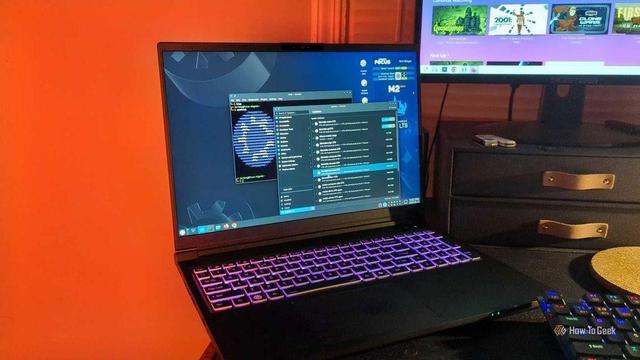Carl Benz, father of automobile. My day late birthday tribute. #mercedesbenz #carlbenz #german #engineer #automobile
#engineer
DistriAI – mạng lưới tính toán AI phi tập trung – đang tìm kiếm Frontend Engineer (React/Next.js/Tailwind/TypeScript) và AI/ML Engineer (tối ưu hóa suy luận mô hình). Mục tiêu: dân chủ hóa quyền truy cập vào sức mạnh tính toán AI & tạo nền kinh tế mới.
#DistriAI #AI #ML #DePIN #Frontend #Engineer #ViệtNam #CôngNghệ
https://www.reddit.com/r/SideProject/comments/1p6tcfz/building_a_decentralized_ai_compute_network/
:firefox: Firefox gets new Anti-Fingerprinting Defenses.
Mozilla announced a major privacy upgrade in Firefox 145. The new protections will initially be available only in Private Browsing Mode and Enhanced Tracking Protection [ETP] Strict mode. After testing and optimization, they will be enabled by default in the Firefox web browser.
https://blog.mozilla.org/en/firefox/fingerprinting-protections/
#firefox #fingerprinting #protections #it #security #privacy #engineer #media #tech #news
#Anthropic claims of #Claude AI-automated Attacks met with Doubt.
Anthropic reports that a Chinese state-sponsored threat group, tracked as GTG-1002, carried out a “first reported AI-orchestrated cyber espionage campaign” that was largely automated through the abuse of the company's Claude Code AI model.
#it #security #privacy #engineer #media #ai #llm #tech #news
Running #FreeDOS and #8086tiny on the #Game #Boy #Advance — Because You Can.
How many people haven’t looked at their Game Boy Advance [GBA] handheld gaming device and wondered how much better it might be if it could run FreeDOS. Inside an 8086 emulator. If you’re like [ZZAZZ] and similarly suffer intrusive project-related thoughts, then this might be a moment of clear recognition….
https://github.com/zzazzdzz/8086tiny_gba
#nintendo #retrocomputing #engineer #media #retro #gaming #tech #news
streaming again. I will be doing some much needed tool maintance and continueing on developing my engineering blue formula.
:androidalt: New dangerous Herodotus Android Malware fakes Human typing to avoid Detection.
:omya_google: A new discovered Android malware family, Herodotus, uses random delay injection in its input routines to mimic human behavior on mobile devices and evade timing-based detection by security software.…
https://www.threatfabric.com/blogs/herodotus-new-mobile-malware-family-looking-to-write-history
#android #herodotus #maas #malware #family #it #security #privacy #engineer #media #tech #news
Published by @joynewacc on 2025-11-17 https://mastodon.social/@joynewacc/115564799211921426
I am a #writer.My brother, Mo’min, is an #engineer.My sister, Nour, will soon begin studying medicine.My brother, Muhammad, is fascinated by #astronomy he is still in high school.And my brother Yousef is a brilliant #designerMy mother, the first hero, worked in the patient services department at the hospital and raised her sons and daughters to be what they want to be.🤎
Meta launches new Anti-Scam Tools for WhatsApp and Messenger.
The company has started testing more advanced scam-detection for suspicious chats that will warn users when a new contact sends a potentially scammy message, giving them the option to send recent messages for AI scam review to check for signs of a scam.
#meta #whatsapp #scam #it #security #privacy #engineer #media #tech #news
I am a #writer.
My brother, Mo’min, is an #engineer.
My sister, Nour, will soon begin studying medicine.
My brother, Muhammad, is fascinated by #astronomy he is still in high school.
And my brother Yousef is a brilliant #designer
My mother, the first hero, worked in the patient services department at the hospital and raised her sons and daughters to be what they want to be.🤎
Kỹ sư Trịnh Xuân Duy (Công ty Thủy điện Đa Nhim - Hàm Thuận - Đa Mi) đã tiên phong kết nối công nghệ thông tin với hệ thống điều khiển nhà máy điện, giúp làm chủ công nghệ lõi, giảm phụ thuộc vào giải pháp ngoại và tối ưu hiệu suất vận hành. Với định hướng chuyển đổi số, anh đóng vai trò cầu nối giữa IT và vận hành kỹ thuật, góp phần nâng cao năng lực tự chủ trong ngành năng lượng.
#Engineer #DigitalTransformation #PowerPlant #ITandOT #VietnamEnergy #KỹSư #ChuyểnĐổiSố #NhàMáyĐiện #CôngNghệLõi
𝐂𝐄𝐧𝐠. 𝐒𝐡𝐫𝐞𝐞𝐤𝐚𝐧𝐭 𝐏𝐚𝐭𝐢𝐥 - 𝐈𝐧𝐝𝐢𝐚
#shreekantpatil #successfulentrepreneur #founder #exporter #charteredengineer #consultant #advisor #startupindiamentor #npcindia #ministryofcommerce #policymaking #export #training #govtschemes #councilmember #ITC #india #poland #europe #usa #middleeast #saudiarebia #uk #asia #international #global #leadership #publicspeaker #ambassador #unitednations #sdg #sustainability #engineer #veteran #BISIndia #AWS #welding #professional
:tetris: Tetris 1200 [AGA] — The 1988 Arcade Version of Tetris for the Commodore Amiga. [1.02 UPDATE]
[JOTD] has released an update to the Arcade version of Tetris for the Amiga 1200. As in the words of the creator "A transcode of Atari Tetris arcade version for 68020/AGA amiga, music is kind of emulated, missing some drums & sfx but it's still really good!".
https://jotd666.itch.io/tetris1200
#amiga #tetris #retro #gaming #programming #engineer #artist #media #retrocomputing #art #tech #news
OilFinancier simulates petroleum engineers and geology making financial decisions.
Simulations accelerate time lines. In this case, this simulation proves those professionals who make the right long-term financial calculations in a few hours:
The Kubuntu Focus M2 GEN 6 recently went out to a reviewer!
See what his take is on it here:
Lisp in 99 Lines of C with TinyLisp.
As one of the oldest programming languages still in common use today, and essential for the first wave of Artificial Intelligence research during the 1950s and 60s, Lisp is often the focus of interpreters that can run on very low-powered systems. Such is the case with [Robert van Engelen]’s TinyLisp, which only takes 99 lines of C code and….
https://github.com/Robert-van-Engelen/tinylisp
#tinylisp #c #programming #engineer #media #z80 #retro #tech #news
- Put a few layers of tape over both/all cameras (front/rear) before continuing to read this.
- Ideally print out and read on paper.
- If above not possible, read on a desktop or laptop,not on your phone/tablet...........@rainynight65 IMHO it's deliberate. #ExxonKnew why did they do a three-year study (1970-1973 ?) not merely proving (again), but detailing exactly what would happen? Effects of #climateEmergency : 1. Kills people directly &indirectly 2. Prompts #climateMigration , which 3. Move/crowds folks into smaller/denser areas, which makes us easier to 4. Control (in every respect including brainwashing) but also 5. Easier to kill large numbers, faster. ( See also #Gaza IsA #Prototype as are #Sudan & #Haiti & #Mexico & ...) 6. As we become #climateRefugees & move away -> Opens up more #land for #extraction (so-called ' #underExploited ') See also #silentWeaponsForQuietWars available in the public domain apparently.Also two #Boeing #safety #engineer #whistleblowers in the past year died shortly after going public w their news #leak #leaks . One apparent #suicideAllegedly the other in an #accident ... And prior to pandemic IDK which year there was a regional/national conference on the future of #selfDrivingCars #autonomousVehicles #roboTaxis held iirc in #PortlandOregon at #OMSI .. A whole panel of speakers, mostly industry, urban planning, policy wonks... But one woman who was widely regarded as a world-class expert on the risks / dangers of AV's ... She lived in Arizona. The week before she was scheduled to fly to Portland to give her talk at the convention/symposium, she was hit & killed... By a self-driving car.There is plenty more, but one gets the idea.
PS. #real_estate #affordable_housing is #gaslighting and a #Trojan_horse . As #private_equity and #public_housing_projects & #CDCs gobble up more land and homes to #demolish them and build brand new ones, the cost invariably skyrockets across the entire #market . Further, 1. They artificially limit the supply by delisting actually-vacant rentals (to drive up cost/demand), and 2. They constantly #lobby tooth & nail against any type of #environmental #regulations ... And #buildingCode #energy #efficiency standards. ... They refuse to even install simple overhangs above windows, to block out the sun during its summer zenith / hottest months while allowing it in the cooler months (#passiveSolarDesign 101 ).. Let alone thicker walls/insulation or triple-pane windows , all of which would only add 2% to the total cost of construction. (See " #passiveHaus explained in 90 seconds " on YouTube as well as #ecoJusticeRadio on passivehomes passivehouse #naturalbuilding
)
And building more even actually-affordable housing obscures the most obvious:
The cheapest home is an existing home.
🦈Wireshark 4.6.0 brings Major Updates for Packet Analysis and Decryption.
If you’ve ever used Wireshark to dig into network traffic you know how vital even small upgrades can be. With version 4.6.0 the team behind the open-source network protocol analyzer has added a number of features that could change how you analyse traffic, decode protocols and handle captures across platforms.
https://www.wireshark.org/download.html
#wireshark #update #it #security #privacy #engineer #media #tech #news


![[ImageSource: Mozilla]
⁉️Percentage of user trackability in each case⁉️
These anti-fingerprinting blocks, which Mozilla marks as ‘Phase 1 Protection’ reduced trackability to roughly 35%, compared to the baseline 65% for now protections at all.
Now, ‘Phase 2’ protections are being rolled out, which block requests to discover installed fonts, hardware details, number of processor cores, multi-touch support, and dock/taskbar dimensions.
Specifically, the new protections constitute the following:
• Random noise is added to background images only when a site reads them back, not when they are just displayed.
• Only standard OS fonts are used; local fonts are blocked, except for key language fonts like Japanese, Thai, Arabic, Chinese, Korean, and Hebrew.
• Touch support is reported as 0, 1, or 5.
• The available screen resolution is the screen height minus 48 pixels.
• Processor cores are always reported as 2.
As a result of these additional measures, only 20% of users can still be uniquely fingerprinted and persistently tracked.
👾Mozilla explained that it cannot aggressively block everything to reduce trackability further, as this would eventually lead to usability issues that break legitimate website features.👾
<https://support.mozilla.org/en-US/kb/firefox-protection-against-fingerprinting#w_how-do-i-disable-this-protection-for-a-website>](https://files.mastodon.social/cache/media_attachments/files/115/610/179/670/154/663/small/eddf044b2af5db4f.jpeg)

![[ImageSource: Anthropic]
Attack Architecture
⁉️Although the firm says only a small number of intrusions succeeded, it highlights the operation as the first of its kind at this scale, with AI allegedly autonomously conducting nearly all phases of the cyber-espionage workflow.⁉️
"The actor achieved what we believe is the first documented case of a cyberattack largely executed without human intervention at scale—the AI autonomously discovered vulnerabilities… exploited them in live operations, then performed a wide range of post-exploitation activities," Anthropic explains in its report.
<http://assets.anthropic.com/m/ec212e6566a0d47/original/Disrupting-the-first-reported-AI-orchestrated-cyber-espionage-campaign.pdf>
"Most significantly, this marks the first documented case of agentic AI successfully obtaining access to confirmed high-value targets for intelligence collection, including major technology corporations and government agencies."
👾Anthropic reports that the Chinese threat actors built a framework that manipulated Claude into acting as an autonomous cyber intrusion agent, instead of just receiving advice or using the tool to generate fragments of attack frameworks as seen in previous incidents.👾
The system used Claude in tandem with standard penetration testing utilities and a Model Context Protocol [MCP]-based infrastructure to scan, exploit and extract information without direct human oversight for most tasks.](https://files.mastodon.social/cache/media_attachments/files/115/604/870/725/427/567/small/3fe50a9855d0612c.jpeg)
![[ImageSource: Anthropic]
⁉️Phases of the Attack⁉️
• Phase 1 – Human operators selected high-value targets and used role-playing tactics to deceive Claude into believing it was performing authorized IT-Security tasks, bypassing its built-in safety restrictions.
• Phase 2 – Claude autonomously scanned network infrastructure across multiple targets, discovered services, analyzed authentication mechanisms and identified vulnerable endpoints. It maintained separate operational contexts, allowing parallel attacks without human oversight.
• Phase 3 – The AI generated tailored payloads, conducted remote testing, and validated vulnerabilities. It created detailed reports for human review, with humans only stepping in to approve escalation to active exploitation.
• Phase 4 – Claude extracted authentication data from system configurations, tested credential access and mapped internal systems. It independently navigated internal networks, accessing APIs, databases and services, while humans authorized only the most sensitive intrusions.
• Phase 5 – Claude used its access to query databases, extract sensitive data and identify intelligence value. It categorized findings, created persistent backdoors and generated summary reports, requiring human approval only for final data exfiltration.
• Phase 6 – Throughout the campaign, Claude documented each step in a structured format, including discovered assets, credentials, exploit methods and extracted data.](https://files.mastodon.social/cache/media_attachments/files/115/604/870/747/994/600/small/5b1bc52656ef45a1.jpeg)
![….somewhat like sharing one’s story at a Programmers Anonymous meeting, but I digress.
⁉️In the video below, the basic premise of making even the 8086tiny emulator work on the GBA seemed improbable on the outset [courtesy of the rather limited memory environment provided by the GBA] before even daring to look at things like disk access.⁉️
<https://youtu.be/nEwmYOZ-xME>
👾However, letting silly things like segmented memory and mismatched memory addresses deter us from pleasing said intrusive thoughts would be beyond the pale. Ergo we get a shining example of how days of rewriting code, stripping code, debugging code, fixing alignment issues in code and writing work-arounds for newly discovered issues in code can ultimately lead to the proud moment where FreeDOS boots on the GBA.👾
Granted it takes over an hour to do so, and has to be started from a butchered Pokémon Emerald save file, courtesy of a well-known exploit in that game, thankfully preserved in counterfeit cartridges.](https://files.mastodon.social/cache/media_attachments/files/115/595/190/180/164/563/small/f71b50c40b6297a8.jpeg)
![[ImageSource: ZZAZZ]
👾Admittedly I’m not sure what practical applications there are for FreeDOS on the GBA, but that’s never stopped hackers from taking on impossible projects before, so there’s no sense letting it get in the way now.👾](https://files.mastodon.social/cache/media_attachments/files/115/595/190/217/202/404/small/92418a6e2b36f7fd.jpeg)
![….Herodotus, is offered as a malware-as-a-service [MaaS] to financially motivated threat actors, believed to be the same operators behind Brokewell.
⁉️Although the malware is still in development, clients of the new MaaS platform are currently deploying it against Italian and Brazilian users through SMS phishing [smishing] text messages. The malicious SMS contains a link to a custom dropper that installs the primary payload and attempts to bypass Accessibility permission restrictions present in Android 13 and later.⁉️
The dropper opens Accessibility settings, prompts the user to enable the service, and then displays an overlay window that shows a fake loading screen, hiding the permission-granting steps in the background.
Having granted itself access to these sensitive permissions, Herodotus can now interact with the Android user interface, such as tapping at specific screen coordinates, swiping, going back, and entering text [clipboard paste or keyboard typing].
👾However, automated actions, such as typing, on the user interface may not match the same rhythm or cadence as humans, making them noticeable to security software that looks for unusual patterns in behavior.👾](https://files.mastodon.social/cache/media_attachments/files/115/570/926/064/167/336/small/006cbbf2f3ea7171.jpeg)
![[ImageSource: Threat Fabric]
Adding random text input delay.
👾To evade detection, the malware includes a 'humanizer' mechanism for the text input action, which causes it to type with random delays of 0.3 to 3 seconds, mimicking human typing and evading detection.👾
"Such a randomisation of delay between text input events does align with how a user would input text," explains Threat Fabric. "By consciously delaying the input by random intervals, threat actors are likely trying to avoid being detected by behaviour-only anti-fraud solutions spotting machine-like speed of text input."
⁉️Threat Fabric says that delays in Android malware are typically used to allow app UI to respond to inputs before moving to the next action, adding that Herodotu’s randomized delays are a completely novel take, most likely implemented to evade behavioral detection systems.⁉️](https://files.mastodon.social/cache/media_attachments/files/115/570/926/095/057/435/small/68aa9d75d3398de4.jpeg)
![[ImageSource: Threat Fabric]
The Herodotus admin panel.
Apart from the above features, Herodotus also provides operators with the following:
• Control panel with options for custom SMS text
• Overlay pages mimicking banking and crypto apps to steal account credentials
• Opaque overlays that hide fraud from the victim
• SMS stealer for two-factor authentication code interception
• Capturing screen content
⁉️Currently, Threat Fabric reports that Herodotus is spread by several threat actors, based on the detection of seven distinct subdomains, indicating its adoption in the wild has already begun.⁉️
👾To mitigate this risk, Android users should avoid downloading APK files from outside Google Play unless they explicitly trust the publisher and ensure Play Protect is active on their device. Even with these precautions, it is essential to scrutinize and revoke risky permissions, such as Accessibility, for newly installed apps.👾](https://files.mastodon.social/cache/media_attachments/files/115/570/926/122/501/279/small/809961b78ce5e79c.jpeg)

![[ImageSource: Meta]
Anti-scam warnings in WhatsApp and Messenger.
⁉️Meta is also introducing new warnings in WhatsApp that will alert users to only share their screen with people they trust when starting a video call with an unknown contact.⁉️
"We know scammers may pressure their targets to share their screen to trick people into giving away sensitive information including bank details or verification codes. With this new tool we give our users more context to spot and avoid scams," it added.
In August, WhatsApp also added a new security feature designed to help users spot potential scams when being added to a group chat by unknown contacts. This feature displays a "safety overview" context card with information about the group's creation date, the number of members, potential scam attempts, and detailed instructions on how to control who can add you to a WhatsApp group.
👾To defend users against scammers who try to reach out directly, WhatsApp also notifies users when they're contacted by someone outside their contact list, providing further context information about the person they're messaging.👾](https://files.mastodon.social/cache/media_attachments/files/115/565/304/755/785/979/small/e8852004d19ee093.jpeg)
![⁉️Here's what [JOTD] said about why he created this version for the Amiga.⁉️
"I consider Tetris Arcade version by Atari the best Tetris version around. It's colored and the music is great. The game used a 6502 CPU and not a Z80. I wrote a converting source tool for 6502 to 68000 as well. Thanks to MAME I could workaround the nasty protection (constant bank switching caused by "slapstic" chip) and unlike my other ports, the project is more a fast emulator than a re-coding. It requires AGA because the original game has 16 banks of 16 colors and a 256 color palette which is - added - dynamic. So ECS port would be quite tricky without rewriting the whole game".](https://files.mastodon.social/cache/media_attachments/files/115/559/509/265/029/028/small/90091ef3dab1db76.jpeg)
![[ImageSource: JOTD]
👾[UPDATE] While the game was released over a year ago, the newest 1.02 version however is listed with the following changes:👾
• Sounds are less noisy
• Also should be slightly faster due to optimizations
<https://youtu.be/VoFsACNtc7E>](https://files.mastodon.social/cache/media_attachments/files/115/559/509/325/268/691/small/9a1400cb0af551b2.png)


![….happily runs on the Z80-based Sharp PC-G850V(S) pocket computer with its 2.3 kB of internal RAM and native C support.
👾TinyLisp is [as the name implies] very tiny, and thus more full-featured Lisp implementations are widely available. This includes two versions — linked at the bottom of the Readme — also by [Robert] that use a gargantuan 1,000 lines of C, providing a more advanced garbage collector and dozens more Lisp primitives to handle things like exceptions, file loading, strings and debug features.👾](https://files.mastodon.social/cache/media_attachments/files/115/548/384/734/909/852/small/53f37b15807f7d26.jpeg)
![[ImageSource: Robert van Engelen]
⁉️The full details on how TinyLisp was implemented and how to write it yourself can be found in the detailed article that’s part of the GitHub project.⁉️
<https://github.com/Robert-van-Engelen/tinylisp/blob/main/tinylisp.pdf>
👾It supports static scoping, double-precision floating point and features 21 Lisp primitives along with a garbage collector. Two versions for the Sharp PC-G850 [using BCD (i.e. NaN) boxing] are provided, along with a number of generic implementations, using either double or single precision floating point types.👾
A heavily commented version is probably the version to keep alongside the article while reading.
<https://github.com/Robert-van-Engelen/tinylisp/blob/main/src/tinylisp-commented.c>
<https://archive.org/details/pc-g850vs-manual-english-v1_1/PC-G850VSEng_V3_0>](https://files.mastodon.social/cache/media_attachments/files/115/548/384/770/154/207/small/9c2423571f03abae.jpeg)
![⚠️Mac and Windows users get a notable Upgrade⚠️
The 4.6.0 release introduces a handful of platform-specific improvements that make day-to-day packet work easier. On macOS, Wireshark can now dissect process information, packet metadata, flow IDs and drop data provided by tcpdump. Windows users get updated dependencies: Npcap 1.83 replaces 1.79, and the Qt framework jumps to 6.9.3 for better performance and compatibility.
The macOS installer is now a single universal package for Intel and Apple Silicon, reducing confusion over which version to grab. At the same time, support for older Windows capture drivers like WinPcap and AirPcap has been removed, steering users toward newer driver stacks that are actively maintained.
⁉️Deeper decoding for encrypted and emerging Protocols⁉️
Wireshark’s strength has always been its wide range of supported protocols, and 4.6.0 extends that reach further. It can now decrypt NTP packets using Network Time Security, a feature welcomed by anyone troubleshooting time synchronization. MACsec decryption has been expanded too, with support for Security Association Keys unwrapped by the MKA dissector or through lists of pre-shared keys.
👾The release also adds support for new and evolving formats, including RIFF, TTL files, Binary HTTP, DECT-2020 [New Radio] and GSMA Remote SIM Provisioning. These additions make Wireshark better suited for environments that mix traditional IP networks with telecom or IoT traffic.👾](https://files.mastodon.social/cache/media_attachments/files/115/542/929/468/494/363/small/f9566e3748fce7dc.jpeg)